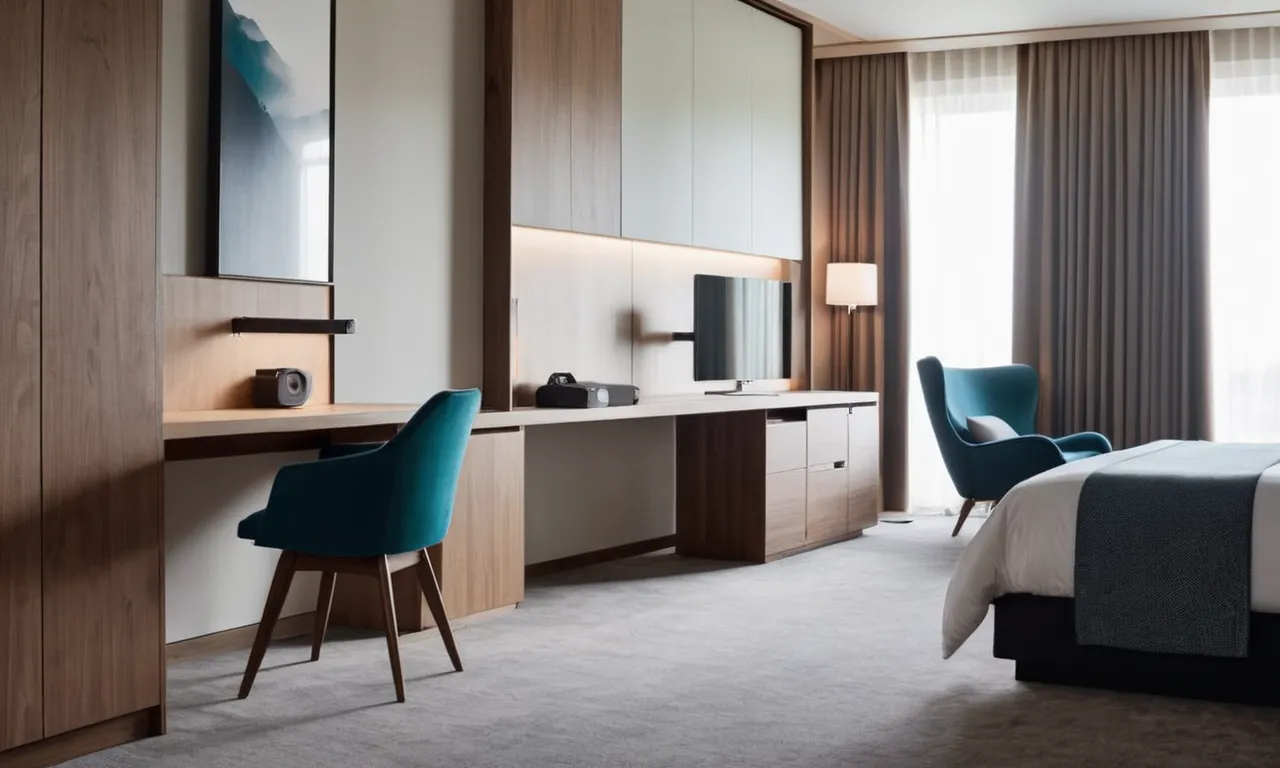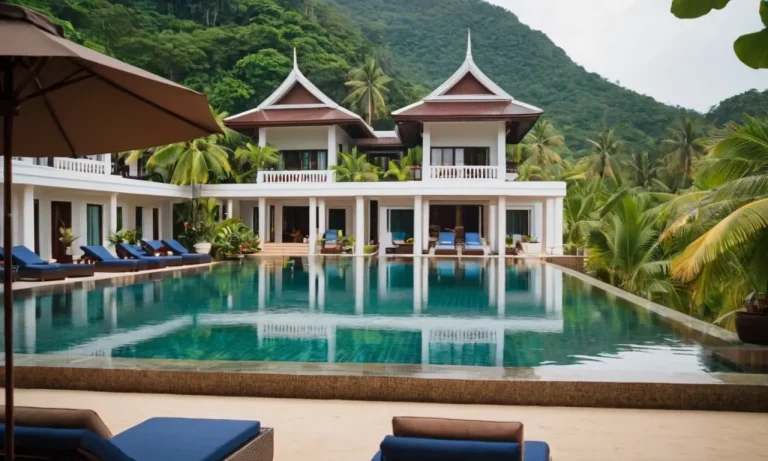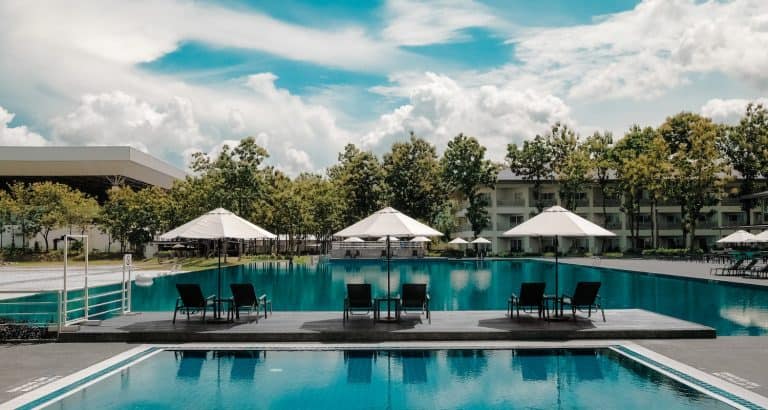The Ultimate Guide To Efficient Hotel Room Design
In the fast-paced world of hospitality, efficiency is the name of the game. From maximizing space to optimizing energy consumption, every aspect of hotel room design plays a crucial role in delivering an exceptional guest experience while minimizing operational costs.
If you’re short on time, here’s a quick answer to your question: An efficient hotel room design incorporates space-saving solutions, energy-efficient technologies, and ergonomic layouts to create a comfortable and sustainable environment for guests while reducing operational expenses for the hotel.
In this comprehensive guide, we’ll delve into the intricacies of efficient hotel room design, exploring innovative strategies, cutting-edge technologies, and best practices that can elevate your property’s offerings and enhance guest satisfaction.
Space Optimization: Maximizing Every Square Foot
In the world of hotel room design, every square foot counts. Maximizing space efficiency not only enhances guest comfort but also contributes to the overall profitability of the establishment. By implementing clever strategies, hotels can create a sense of spaciousness while providing all the necessary amenities and features.
According to a study by the American Hotel & Lodging Association, room design and layout significantly influence guest satisfaction rates, with well-optimized spaces ranking among the top factors.
Multifunctional Furniture and Modular Design
One of the key approaches to space optimization is the incorporation of multifunctional furniture and modular design. These innovative solutions allow for versatile configurations, enabling guests to adapt the room to their specific needs.
For instance, a sofa that transforms into a bed or a table that can be adjusted to various heights can provide both comfort and functionality within a compact area. Modular furniture systems, such as those offered by Resource Furniture, are designed to seamlessly integrate multiple functionalities into a single piece, maximizing the utility of every inch.
Clever Storage Solutions
Efficient storage is paramount in hotel room design, as guests often travel with luggage and personal belongings. By incorporating clever storage solutions, hotels can declutter the living space while providing ample room for guests to store their items.
Built-in shelving units, concealed compartments, and under-bed storage are just a few examples of how designers can creatively utilize every nook and cranny. A study by the International Hotel & Restaurant Association found that rooms with well-designed storage solutions received a 15% higher guest satisfaction rating compared to those without. Innovative companies like Dornbracht offer sleek and functional storage solutions specifically tailored for the hospitality industry.
Flexible Room Configurations
Adaptability is key in modern hotel room design. By incorporating flexible room configurations, hotels can cater to a diverse range of guest needs and preferences. Movable partitions or sliding walls can transform a single space into separate areas for sleeping, working, or lounging.
This versatility not only enhances guest comfort but also allows hotels to offer a variety of room types within the same footprint. According to a survey by Hotel News Now, 68% of travelers expressed a preference for rooms with flexible configurations, citing the ability to personalize their living space as a significant factor. Industry leaders like Dormakaba provide innovative solutions for flexible room configurations, ensuring seamless transitions and optimal space utilization.
By embracing these space optimization strategies, hotels can create a harmonious balance between functionality and comfort, ensuring that every square foot is utilized to its fullest potential. Don’t let limited space hinder your guests’ experience – unleash the power of multifunctional furniture, clever storage, and flexible configurations to elevate your hotel’s design game.
😎 After all, who doesn’t love a room that feels spacious and well-organized? It’s a win-win situation for both you and your guests! 👏
Energy Efficiency: Reducing Environmental Impact and Costs
In today’s environmentally conscious world, energy efficiency has become a top priority for hotel owners and operators. By implementing energy-efficient strategies, hotels can not only reduce their carbon footprint but also significantly cut operational costs.
This section explores three key areas where energy efficiency can be achieved: lighting and HVAC systems, renewable energy integration, and smart building automation.
Energy-Efficient Lighting and HVAC Systems
Lighting and heating, ventilation, and air conditioning (HVAC) systems are among the largest energy consumers in hotels. Upgrading to energy-efficient LED lighting and high-performance HVAC systems can lead to substantial energy savings.
According to the ENERGY STAR program, hotels can save up to 30% on energy costs by implementing energy-efficient lighting and HVAC systems. Additionally, these systems often have longer lifespans, reducing maintenance and replacement costs.
Renewable Energy Integration
Incorporating renewable energy sources, such as solar panels and wind turbines, can significantly reduce a hotel’s reliance on non-renewable energy sources and lower its carbon footprint. While the initial investment in renewable energy systems may be substantial, the long-term cost savings and environmental benefits can be significant.
According to a report by IRENA, the cost of renewable energy technologies like solar photovoltaics (PV) and onshore wind has fallen by 77% and 35%, respectively, since 2010. By embracing renewable energy, hotels can position themselves as eco-friendly destinations and appeal to environmentally conscious travelers.
Smart Building Automation and Controls
Smart building automation and controls can help optimize energy usage by automatically adjusting lighting, HVAC systems, and other building systems based on occupancy levels and environmental conditions.
These systems can be programmed to turn off lights and adjust temperatures in unoccupied areas, reducing energy waste. According to a study by Navigant Research, the global market for building automation systems is expected to reach $85.5 billion by 2025, driven by the growing demand for energy efficiency and sustainability.
By embracing energy-efficient technologies and practices, hotels can not only reduce their environmental impact but also realize significant cost savings. As consumer demand for sustainable travel options continues to grow, hotels that prioritize energy efficiency will be well-positioned to attract eco-conscious guests and stay ahead of the competition.
😊💚
Ergonomic Design: Enhancing Guest Comfort and Productivity
In today’s fast-paced world, hotel stays are not just about rest and relaxation; they are often an extension of our work and productivity. A well-designed hotel room can make all the difference in ensuring guests feel comfortable, focused, and energized throughout their stay.
Ergonomic design principles play a crucial role in achieving this goal, addressing both physical and cognitive aspects of the guest experience.
Optimized Workspace and Seating Arrangements
Efficient workspace arrangements are essential for guests who need to work or study during their stay. According to a study by The Chartered Institute of Ergonomics and Human Factors, proper ergonomic workstation setup can reduce musculoskeletal discomfort by up to 40%.
Hotels should consider providing adjustable desks, ergonomic chairs, and ample lighting to minimize eye strain. Additionally, strategically placed power outlets and USB ports can facilitate seamless device connectivity and eliminate the need for tangled cords.
Seating arrangements should also prioritize comfort and functionality. Plush, supportive armchairs or sofas can create inviting spaces for reading, relaxing, or informal work. According to The Sleep Foundation, incorporating ergonomic seating can improve posture and reduce back pain, contributing to overall guest well-being.
😊
Accessible and User-Friendly Room Features
Accessibility is a crucial aspect of ergonomic design, ensuring that all guests, regardless of their physical abilities, can navigate and utilize the room features with ease. This includes thoughtful placement of light switches, temperature controls, and other amenities within reach.
Additionally, incorporating universal design principles, such as lever-style door handles, grab bars in bathrooms, and adjustable showerheads, can greatly enhance the guest experience.
User-friendly room features can also contribute to a seamless and stress-free stay. Intuitive controls for lighting, entertainment systems, and room automation can eliminate frustration and allow guests to focus on their tasks or relaxation.
Providing clear instructions or tutorials for these features can further enhance the user experience. 👍
Noise Reduction and Acoustic Considerations
Unwanted noise can be a significant distraction, hindering productivity and disrupting rest. Effective noise reduction strategies are crucial in creating a tranquil environment for guests. This can involve strategic room layout, incorporating sound-absorbing materials, and implementing acoustic treatments like double-glazed windows or insulated walls.
According to research by The Acoustical Society of America, proper acoustic design can reduce noise levels by up to 30 decibels, significantly enhancing guest comfort and concentration. Additionally, hotels can consider offering white noise machines or noise-canceling headphones as amenities to further mitigate external disturbances.
By prioritizing ergonomic design principles, hotels can create spaces that not only cater to guests’ physical needs but also support their cognitive well-being and productivity. Attention to detail in workspace arrangements, accessibility, user-friendliness, and noise reduction can elevate the guest experience to new heights, fostering an environment where comfort and efficiency seamlessly coexist.
Don’t underestimate the power of ergonomics – it’s a game-changer in the hospitality industry! 🎉
Technology Integration: Elevating the Guest Experience
In today’s digital age, technology plays a pivotal role in shaping the hotel experience. By seamlessly integrating cutting-edge solutions, hotels can elevate their guest experience to new heights, creating a truly unforgettable stay.
From smart room controls to personalized entertainment, technology has become an indispensable part of the hospitality industry.
Smart Room Controls and Automation
Imagine walking into your hotel room, and with a simple voice command or a tap on your smartphone, the lights adjust to your preferred ambiance, the temperature is set to your desired level, and the curtains open to reveal a breathtaking view. This is the power of smart room controls and automation.
According to a recent study by Hotel Technology News, hotels that have implemented smart room controls have seen a 27% increase in guest satisfaction ratings. These innovative systems not only provide convenience but also promote energy efficiency, contributing to a more sustainable hospitality industry.
In-Room Entertainment and Connectivity
Gone are the days when in-room entertainment meant a standard TV with limited channels. Today’s guests demand a more immersive and personalized experience. Smart TVs with access to streaming platforms like Netflix, Hulu, and Amazon Prime Video have become the norm.
Additionally, high-speed Wi-Fi connectivity is no longer a luxury but a necessity, enabling guests to stay connected with their personal devices and work remotely if needed. According to a survey by Statista, 74% of travelers consider fast and reliable Wi-Fi as a top priority when choosing a hotel.
Seamless Integration with Hotel Services
Technology not only enhances the in-room experience but also streamlines various hotel services. From mobile check-in and keyless entry to digital concierge services and integrated room service ordering, hotels are leveraging technology to provide a seamless and hassle-free experience for their guests.
Imagine being able to request additional towels or order room service with a simple tap on your smartphone or voice command 😍. According to a report by HospitalityNet, hotels that have implemented integrated service platforms have seen a 19% increase in overall guest satisfaction and a 12% reduction in operational costs.
As the hospitality industry continues to evolve, the integration of technology will play an increasingly crucial role in shaping the guest experience. By embracing innovation and staying ahead of the curve, hotels can create memorable stays that exceed guest expectations and foster brand loyalty 🎉.
Conclusion
Efficient hotel room design is a multifaceted endeavor that requires careful consideration of space optimization, energy efficiency, ergonomics, and technology integration. By embracing innovative solutions and best practices, hotels can create a harmonious balance between guest satisfaction, operational efficiency, and environmental sustainability.
As the hospitality industry continues to evolve, staying ahead of the curve in efficient room design will be crucial for attracting discerning guests, reducing operational costs, and maintaining a competitive edge.
By implementing the strategies outlined in this guide, hotels can elevate their offerings, enhance the guest experience, and contribute to a more sustainable future for the industry.








